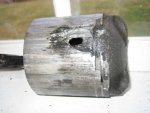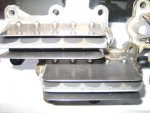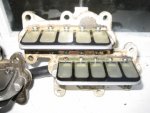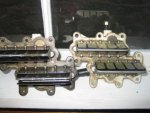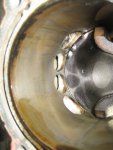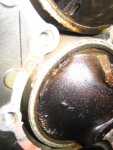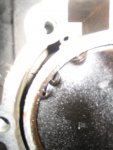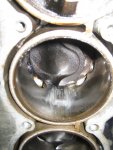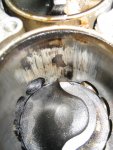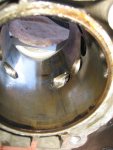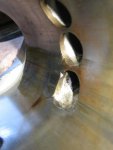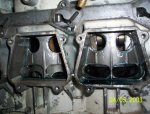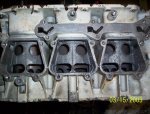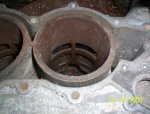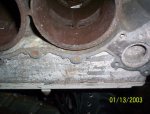redstrat
Petty Officer 1st Class
- Joined
- Dec 29, 2011
- Messages
- 202
View attachment 127407
I'm hoping I have the correct photo attached to this post. First time with this. Forgive me if I get it wrong. This piston is out of a 1986 Force 125 that I bought for parts. The owner said that he lost spark in one cylinder, diagnosed a bad stator, replaced it with a new stator, got spark and then discovered there was no compression in cylinder #2. I tore down the motor to indeed find a new stator and this piston in cylinder #2. Would a bad stator cause this type of damage or are there other parts I should be looking at for this type of failure? Maybe the trigger? Surprisingly the cylinder doesn't look to bad. All the other piston and cylinders look fine. Thinking this was a parts motor I didn't check overall compression before i took it apart.
I'm hoping I have the correct photo attached to this post. First time with this. Forgive me if I get it wrong. This piston is out of a 1986 Force 125 that I bought for parts. The owner said that he lost spark in one cylinder, diagnosed a bad stator, replaced it with a new stator, got spark and then discovered there was no compression in cylinder #2. I tore down the motor to indeed find a new stator and this piston in cylinder #2. Would a bad stator cause this type of damage or are there other parts I should be looking at for this type of failure? Maybe the trigger? Surprisingly the cylinder doesn't look to bad. All the other piston and cylinders look fine. Thinking this was a parts motor I didn't check overall compression before i took it apart.




















